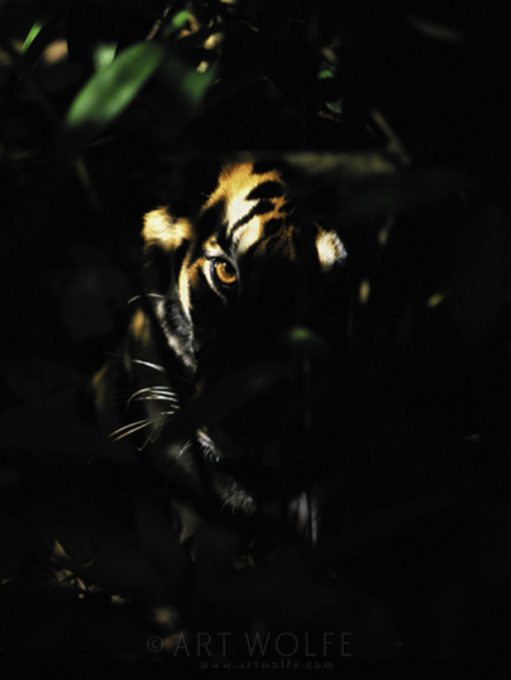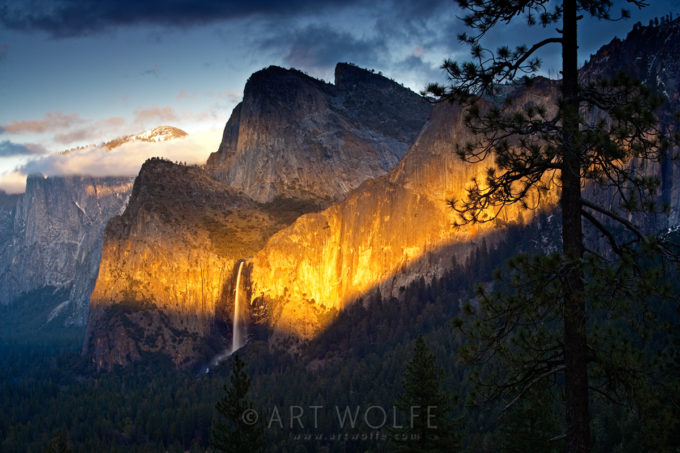Technique Tuesday: Spotlighting

Art Wolfe: Spotlighting is an often unpredictable event that can create and unexpected picture. With this image of a tiger in the dense forest, it was essential that I spot-meter the tiger’s illuminated face to ensure it was exposed correctly, since all of the deep shadows could have easily fooled the camera’s meter.
Martha Hill: I find this image intriguing. Tigers are among the most elusive of the big cats, and this image, by showing it lurking in the shadows, perfectly captures the animal’s mystery. To me it is a more evocative rendering of the subject than the more commonplace, out-in-the-open view we often see.
 Art Wolfe: In the hours prior to this shot (of Bridalveil Fall), the valley had been covered in flat light under solid cloud cover. Late in the afternoon, however, the clouds began to break, sending shafts of light onto the faces of El Capitan and Half Dome, and, in this case, the waterfalls that rush over the cliffs in early spring.
Art Wolfe: In the hours prior to this shot (of Bridalveil Fall), the valley had been covered in flat light under solid cloud cover. Late in the afternoon, however, the clouds began to break, sending shafts of light onto the faces of El Capitan and Half Dome, and, in this case, the waterfalls that rush over the cliffs in early spring.
Getting the proper exposure in a shot like this can be challenging. using my camera’s spot meter, I took a reading off the brightest area and opened up to keep the whole image from getting too dark.
Martha Hill: This image has drama and mood. Bridalveil Fall is one of Yosemite’s most photographed icons, but the unusual lighting conditions captured here set this image apart. The momentary beam of light illuminates the distant waterfall, directing the eye immediately to it. Under different conditions, such as an even lighting, we might overlook the waterfall altogether in this already dramatic landscape. The success of this image depends on timing – waiting for the exact moment when the light will highlight an interesting visual element.
-Excerpt from The New Art of Photographing Nature, p. 138


